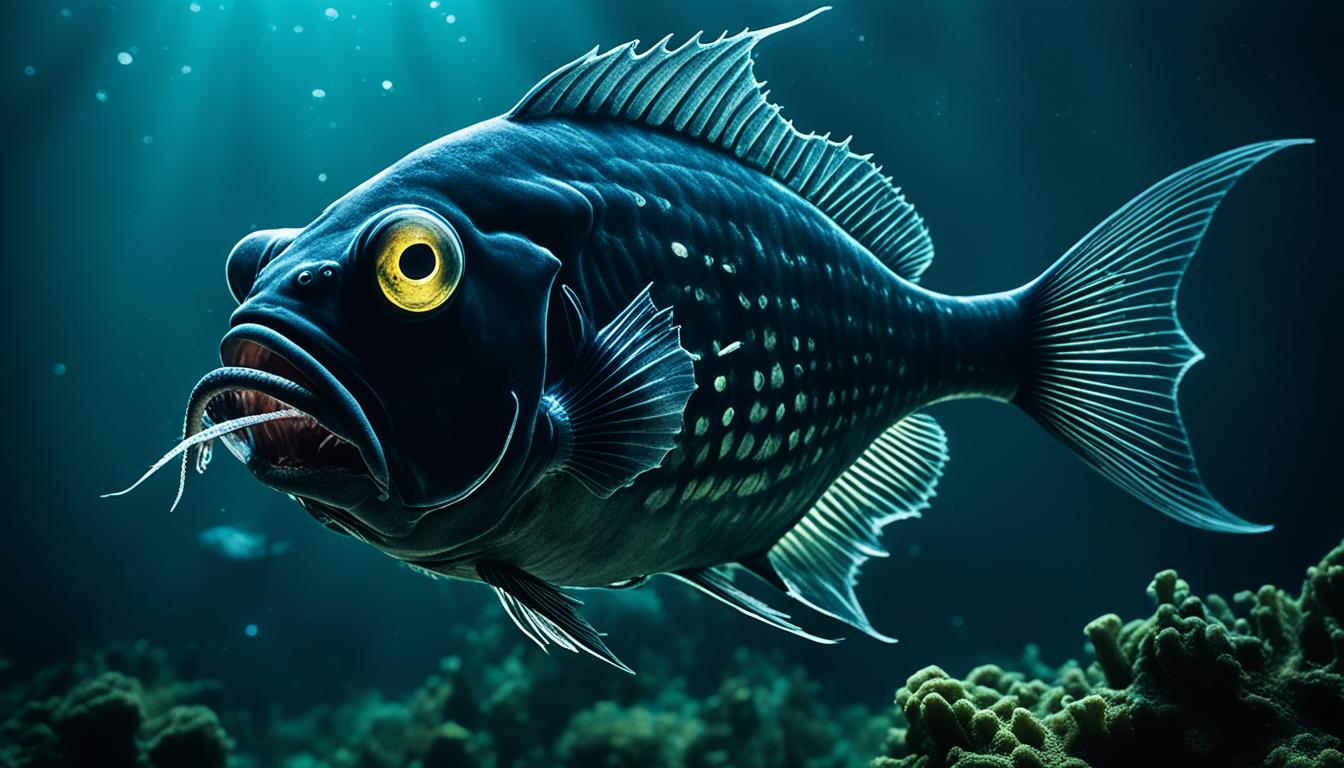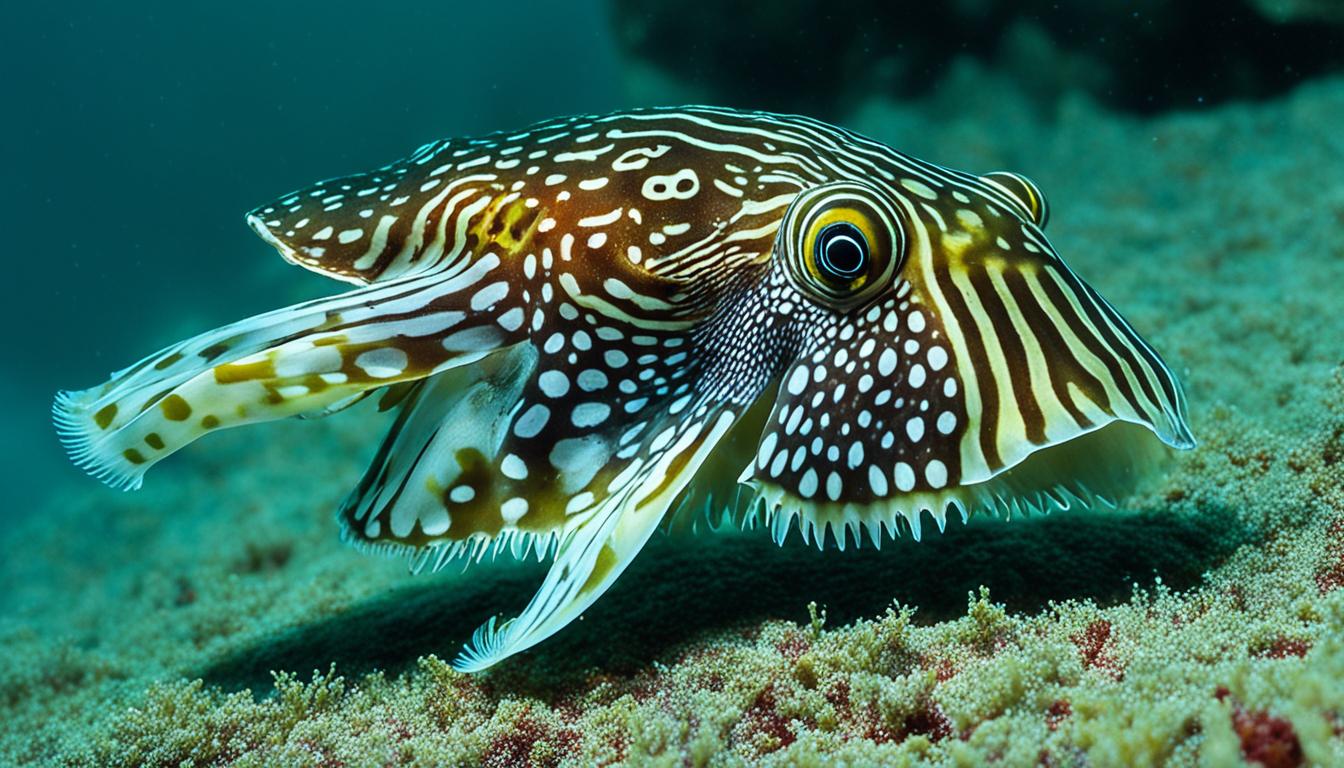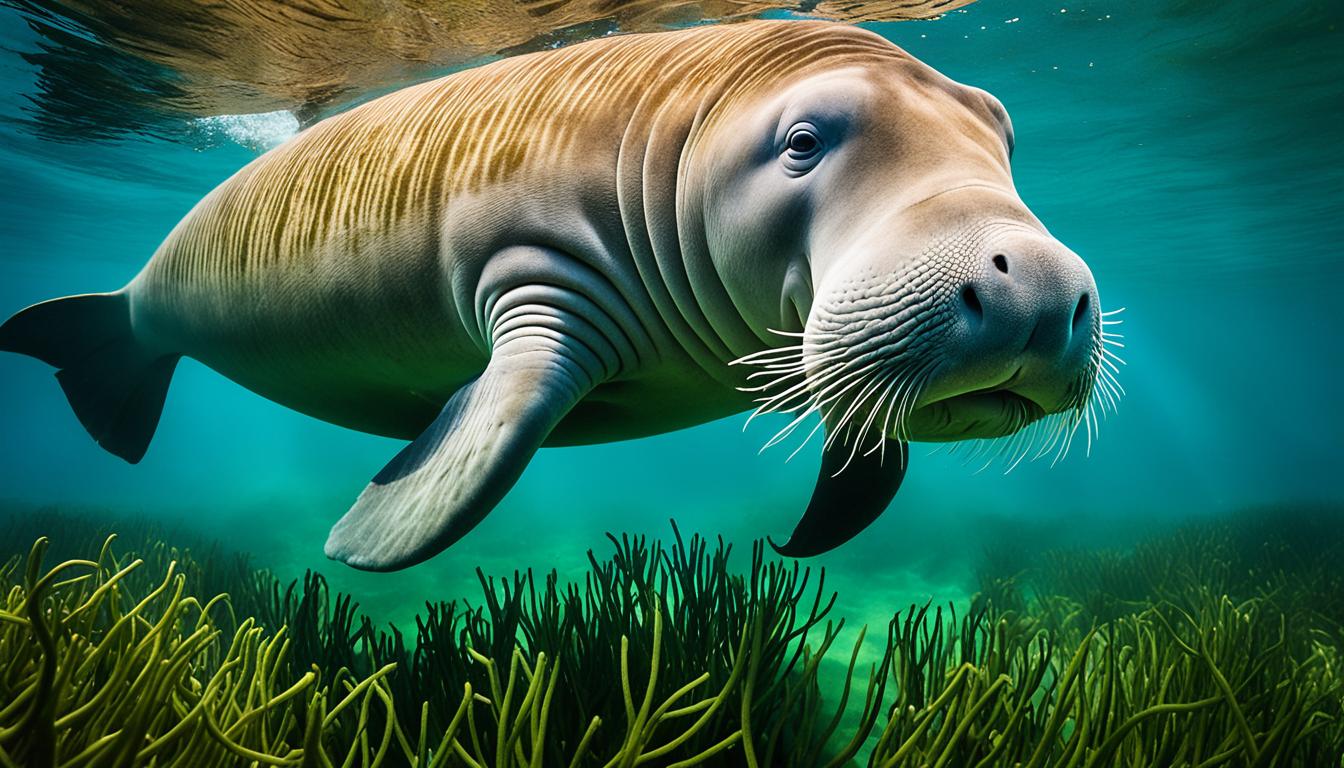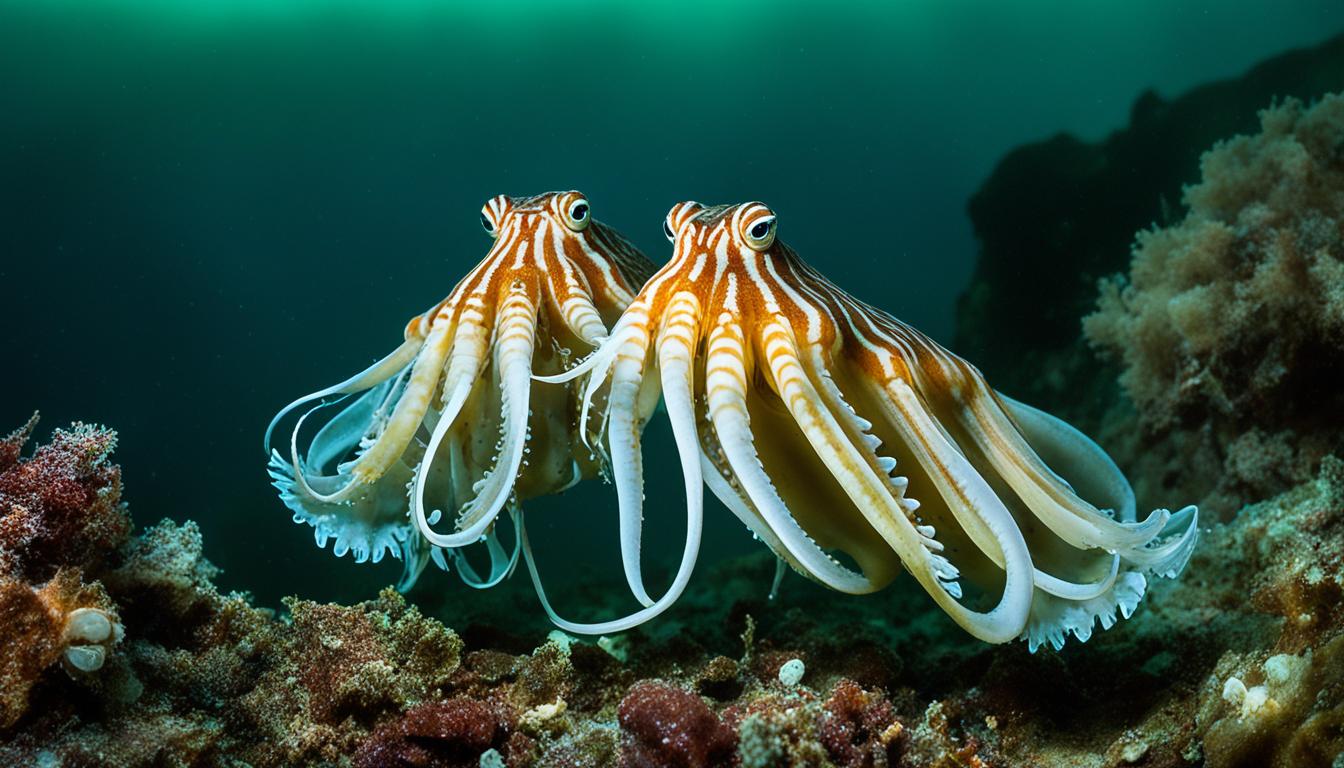Anglerfish are amazing creatures with special ways to live in the deep ocean. You might ask, how do they survive in such dark and cold places? These fish have unique traits that help them in the deep sea.
They use bioluminescence to find food in the dark. They also have special bodies that can handle the high pressure and cold. Let’s look at the anglerfish deep-sea adaptations that let them live in such tough conditions. We’ll see how their physical and behavior traits help them in their deep-sea home.
The Unique Habitat of Anglerfish
The anglerfish lives in a deep, dark place called the anglerfish deep-sea habitat. It’s way down where the sun’s light can’t reach, making it always dark. This place is full of life that has changed a lot to live there.
Anglerfish go as deep as 1000 meters below the ocean’s surface. They live in the bathypelagic and abyssopelagic zones, which are very deep. These zones are cold and dark, with huge pressure and low temperatures. It’s a tough place for most sea creatures.
But, anglerfish have special features that help them survive. They can handle the extreme conditions and find food in this hard environment. Their unique ways of living make them interesting to study in the deep sea.
| Deep-Sea Zone | Depth (meters) | Characteristics |
|---|---|---|
| Bathypelagic Zone | 1000 – 4000 | Dark, cold, pressure increases, limited food availability |
| Abyssopelagic Zone | 4000+ | Extreme darkness, near freezing temperatures, very high pressure |
How do anglerfish adapt to deep-sea environments?
Anglerfish have evolved unique adaptations to live in deep-sea ecosystems. These adaptations help them survive in harsh conditions. Their use of bioluminescence makes them better predators and helps them live in a tough habitat.
The role of bioluminescence in anglerfish survival
Anglerfish have a special light organ on their forehead. This organ, made from a modified dorsal fin spine, attracts prey by lighting up in the dark ocean. The light comes from bioluminescent bacteria living inside them, making a lure that many fish can’t resist.
This trick helps them catch food in a place where it’s hard to find. It’s a key part of how they survive in deep-sea environments.
Environmental factors influencing anglerfish adaptations
The deep sea is tough, with high pressure, cold, and little light. These conditions have shaped the anglerfish’s survival strategies. They are dark-colored, which helps them hide from predators. Their way of reproducing is also designed for survival in the dark ocean.
These strategies let them overcome the challenges of their deep-sea home. They ensure the anglerfish can keep thriving in such a tough place.
Physical Adaptations of Anglerfish
Deep-sea anglerfish have amazing physical traits that help them survive in deep water. These traits help them avoid predators and hunt better.
Coloration and camouflage for predator avoidance
Anglerfish are usually dark gray or brown. This color helps them blend into the deep sea. It makes it hard for predators to see them. They can hide and wait for prey without being noticed.
Unique body structure and movement adaptations
Anglerfish have a round body shape and don’t use their fins much. This makes them slow swimmers. But, it lets them wait quietly for prey to come close. This way, they save energy and catch food easily.
Expandable jaws and teeth for capturing prey
Anglerfish have jaws that can stretch wide. This lets them eat prey of all sizes. With sharp teeth, they make sure prey can’t get away once caught. This is key in the deep sea where food is hard to find.
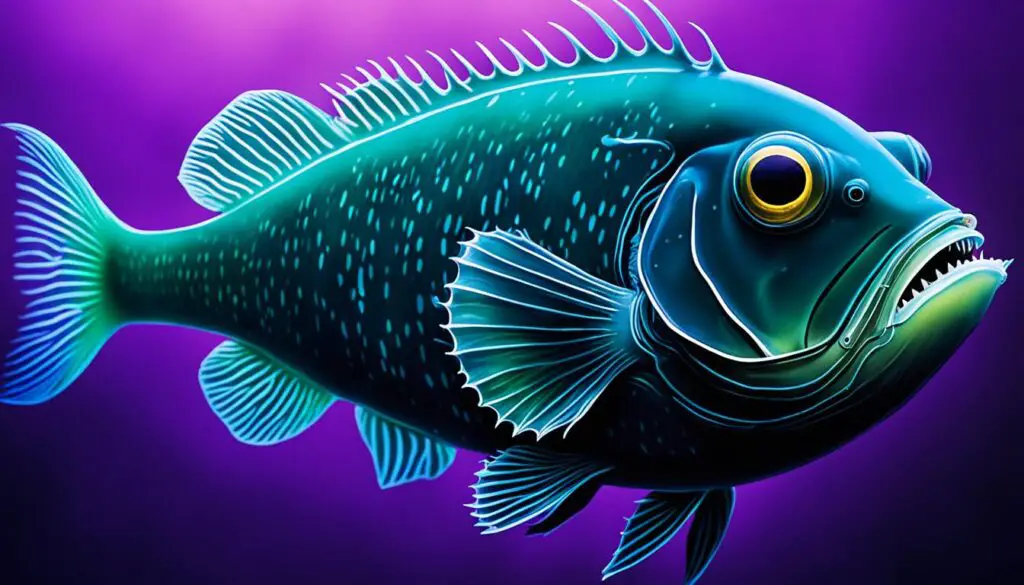
| Adaptation | Description |
|---|---|
| Coloration | Dark gray or brown, aids in camouflage against predators |
| Body Structure | Globular shape, enhances ambush predation efficiency |
| Expandable Jaws | Can stretch to capture various prey sizes |
| Teeth | Sharp, protruding teeth prevent prey from escaping |
Behavioral Adaptations of Anglerfish
Anglerfish have unique behaviors that help them live in the deep sea. They use pheromones to find mates, which is key to their survival. Female anglerfish send out strong chemical signals into the water. This helps males find them even in the dark depths.
Using pheromones for attracting mates
Finding a mate in the vast ocean is tough, especially when you can’t see well. Female anglerfish have glands that make lots of pheromones. These chemicals let males find them from far away.
This way, they can reproduce and keep their species going. It’s a big part of their success in the deep sea.
The hunting strategy: luring prey with bioluminescent bait
Anglerfish also have smart ways to catch food. They use a light on their head to draw in prey. This light makes them look like a glowing lure in the dark.
This trick helps them catch small sea animals that come closer to the light. It’s how they avoid going hungry in the deep sea. These hunting skills show how well anglerfish have adapted to their environment.

